Last updated on 2025-11-13
A review and photo examples using LEICA ELMARIT M 21mm F2.8 with LEICA M10,LEICA M9 DRF and LEICA M6TTL FRF.
- Please see the disclaimer regarding advertising here.
- Italicized links in the text are advertisement links that take you to other sites.
Table of contents
Gallery
The following cameras, films, and film scanners were used to take the sample photos.
- LEICA M10
- LEICA M9
- LEICA M6TTL +Kodak Elite chrome 100 (EB-3)+MINOLTA DiMAGE Scan Multi PRO
- LEICA M6TTL +KODAK E100G +MINOLTA DiMAGE Scan Multi PRO
- LEICA M6 +KODAK E100VS +NIKON COOLSCAN-V
Review
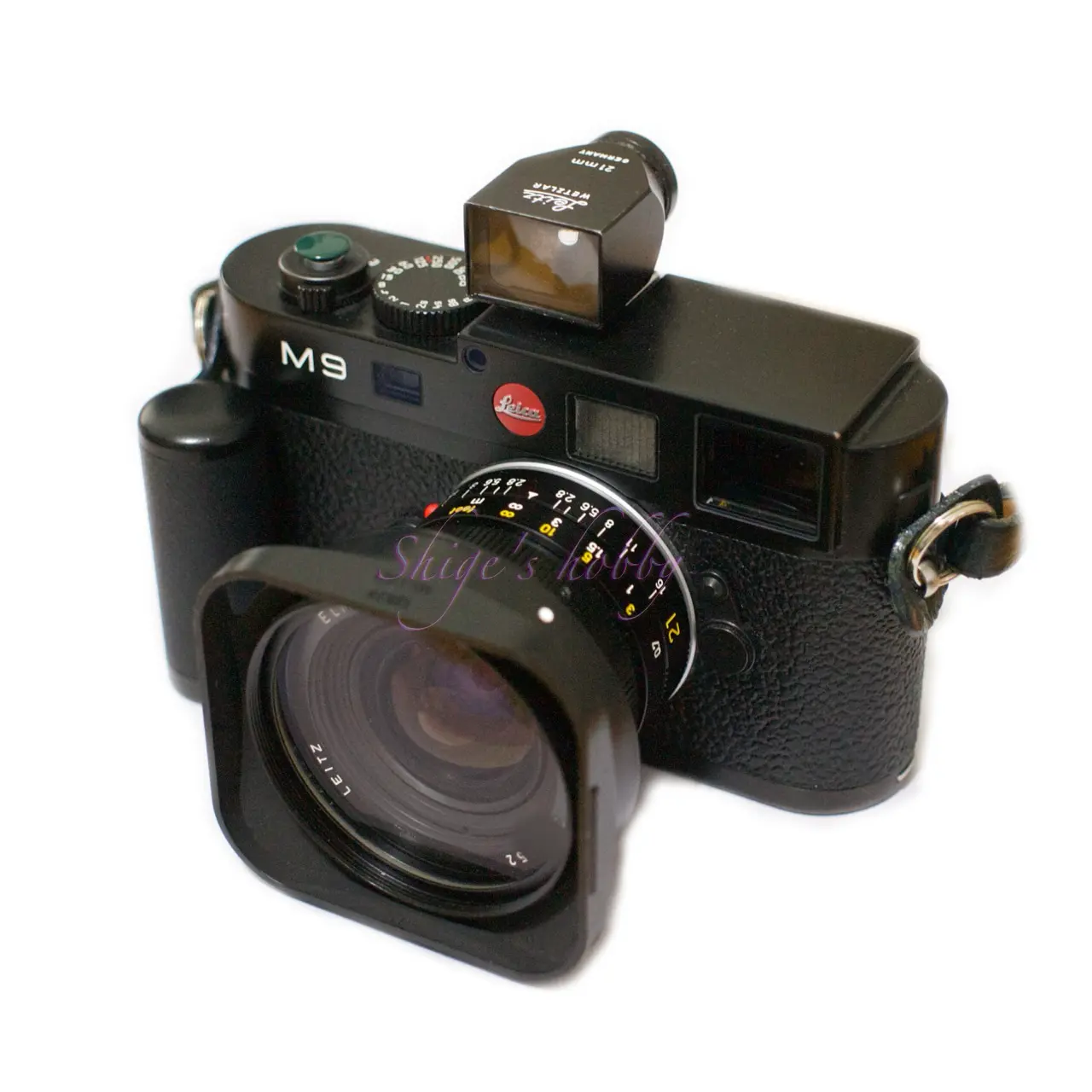
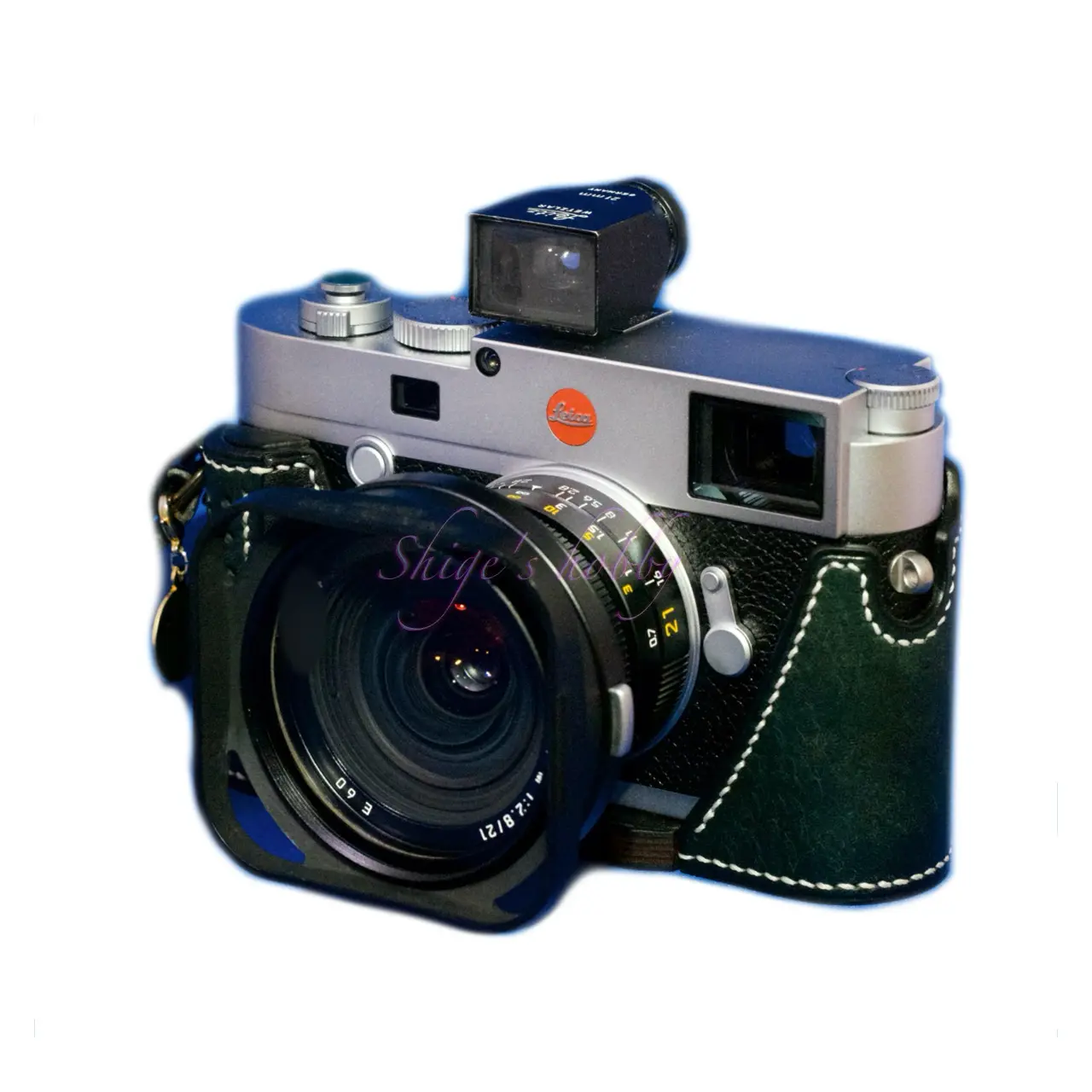
1.Overview
The Elmarit 21mm F2.8 is a long-lived wide-angle lens that was released in 1979 and sold for 20 years.
The main specifications are as follows, and the details are listed in the table.
- Aperture value: 2.8
- Lens construction: 8 elements in 6 groups
- Aperture blades: 8
- Minimum shooting distance: 0.7m
- Leica M rangefinder camera rangefinder linkage: 0.7m
- Hood: Dedicated hood (12543 / 12537)
This lens comes in three variations, all with the same lens configuration.
The earliest lenses with a short minimum focusing distance are sold at a premium price.
- The earliest lenses with a minimum focusing distance of 0.4m
- Early lenses with almost the same appearance but with a pinned hood
- Late lenses with a hooked hood
The built-in viewfinder of the M-type Leica does not have a 21mm viewfinder frame, so an external viewfinder is required to check the shooting range.
2.Usability
The Elmarit 21mm f/2.8’s rendering is slightly blurred at the edges at full aperture, and the overall rendering is soft, lacking the sharpness of the aspherical ELMARIT 21mm released 20 years later.
Of course, as this is an old lens that’s over 30 years old, the effects of aging are undeniable.
Looking at the sample images taken with the film lens, slightly underexposing the image allows for a nice depth and softness. Digitally, images tend to be plainer without image processing.
The Elmarit 21mm f/2.8 uses a retrofocus lens design, which eliminates the peripheral color cast often seen with symmetrical lenses due to digital sensors. As a wide-angle lens, there is some vignetting, and because the lens coating is still in development, it can pick up some strange light when the sun is directly in front of it. This cannot be reduced significantly, even with a dedicated hood. The four sample images show strange light in backlit conditions.
This lens has a large front element and its frame, which is typical of older wide-angle lenses. I like the look of this wide-angle lens barrel, so after using an earlier model of the lens and then selling it, I reacquired a later model. Due to the frequency with which I used the 21mm, I ended up selling it and no longer have it.
The focus and aperture rings are as smooth to operate as Leica lenses of the same era, as long as the lens has been properly maintained. Although it is largely meaningless as of 2025, it is also possible to add 6-bit code specific to Leica M-mount lenses.
3.Summary
In conclusion, to sum up the Elmarit 21mm F2.8, as it is an older wide-angle lens, you cannot expect sharp, high-resolution images. There is not much benefit to producing soft images with a wide-angle lens, so if you mainly shoot landscapes, a newer lens design would be more suitable.
The price of this lens, like other Leica lenses, is on the rise, so if you mainly plan to use it with a digital camera, it is a lens that is difficult to recommend.
Specifications, considerations, etc.
Leica 21mm lens short view
Leica’s M-mount 21mm started with the Schneider Super-Angulon 21mm, which was designed in-house and manufactured and sold from 1979 to around 1997.
Its successor, the Elmarit 21mm ASPH., was released in 1997 with an aspherical lens and a lens barrel with less unevenness.
Since then, the 21mm lineup has expanded to include the Super-Elmar 21mm and Summilux 21mm.
In contrast to the M-mount, Leica sold Schneider’s Super-Angulon for the 21mm focal length of the R-mount, except for zoom lenses, until the end of the R-mount. As an R-mount fanatic, it’s a shame that the original 21mm R-mount was never released.
External Viewfinder
I used an old steel viewfinder made by Leica as a viewfinder to check the shooting range.
The edge of the front glass of this viewfinder is chipped, so the view through it is not that good, but I like using it because it looks good when attached to the camera.
The viewfinder of CARL ZEISS, which was released at the same time as the BIOGON 21mm ZM, has very good visibility.
I also used the viewfinders that came with the CONTAX BIOGONmm and AVENON 21mm, but the visibility was not so good.
In terms of viewfinder visibility, the order was CARL ZEISS (ZM version) > LEICA > CONTAX = AVENON.
When comparing the lens configurations of the ELMARIT 21mm and ELAMRIT 21mm ASPH., we can see that they are relatively similar, and that the ELAMRIT 21mm ASPH. is an evolution of the ELMARIT 21mm.
- The lens construction diagrams are quoted from each company’s materials, and the sizes have been adjusted by us, so they are not exact.
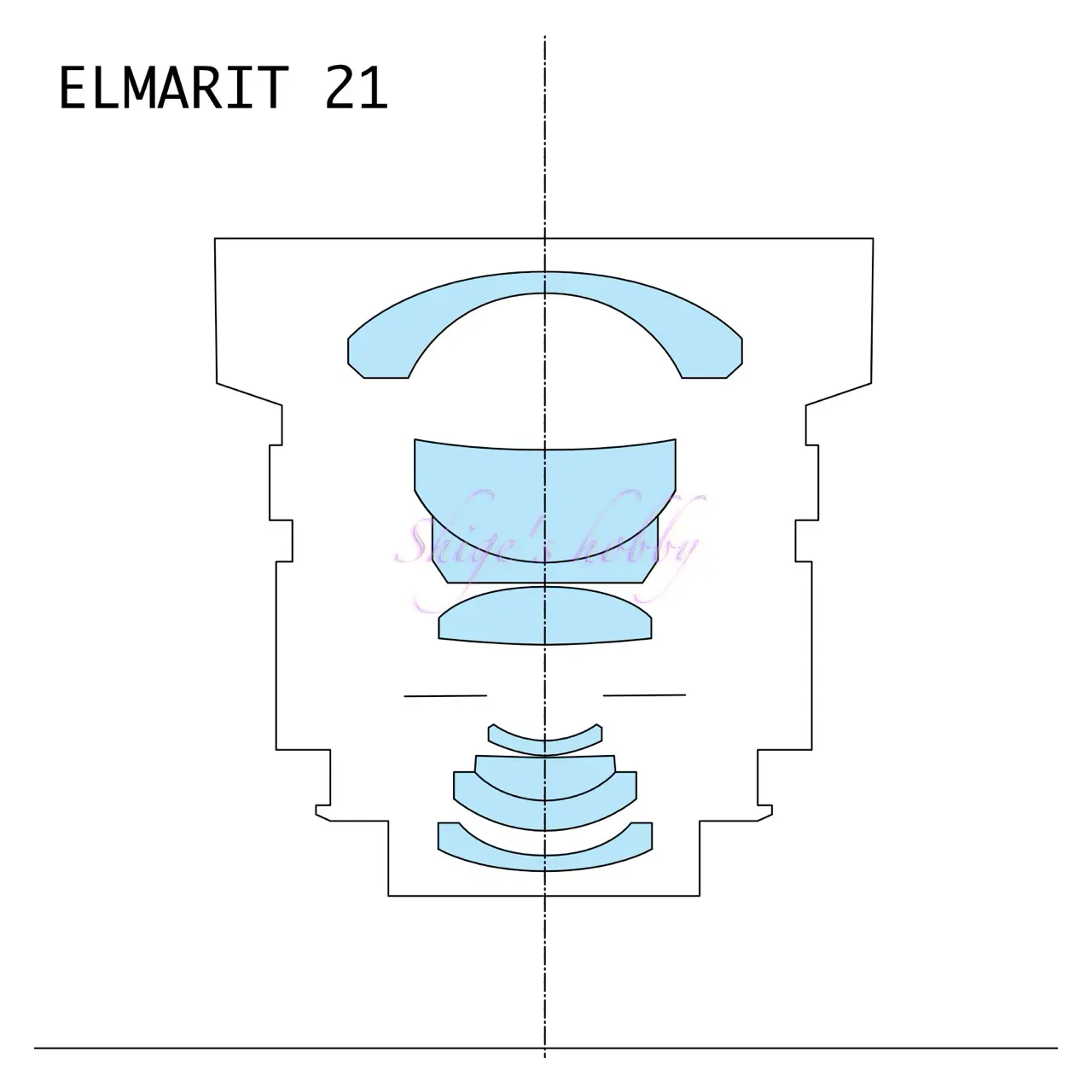
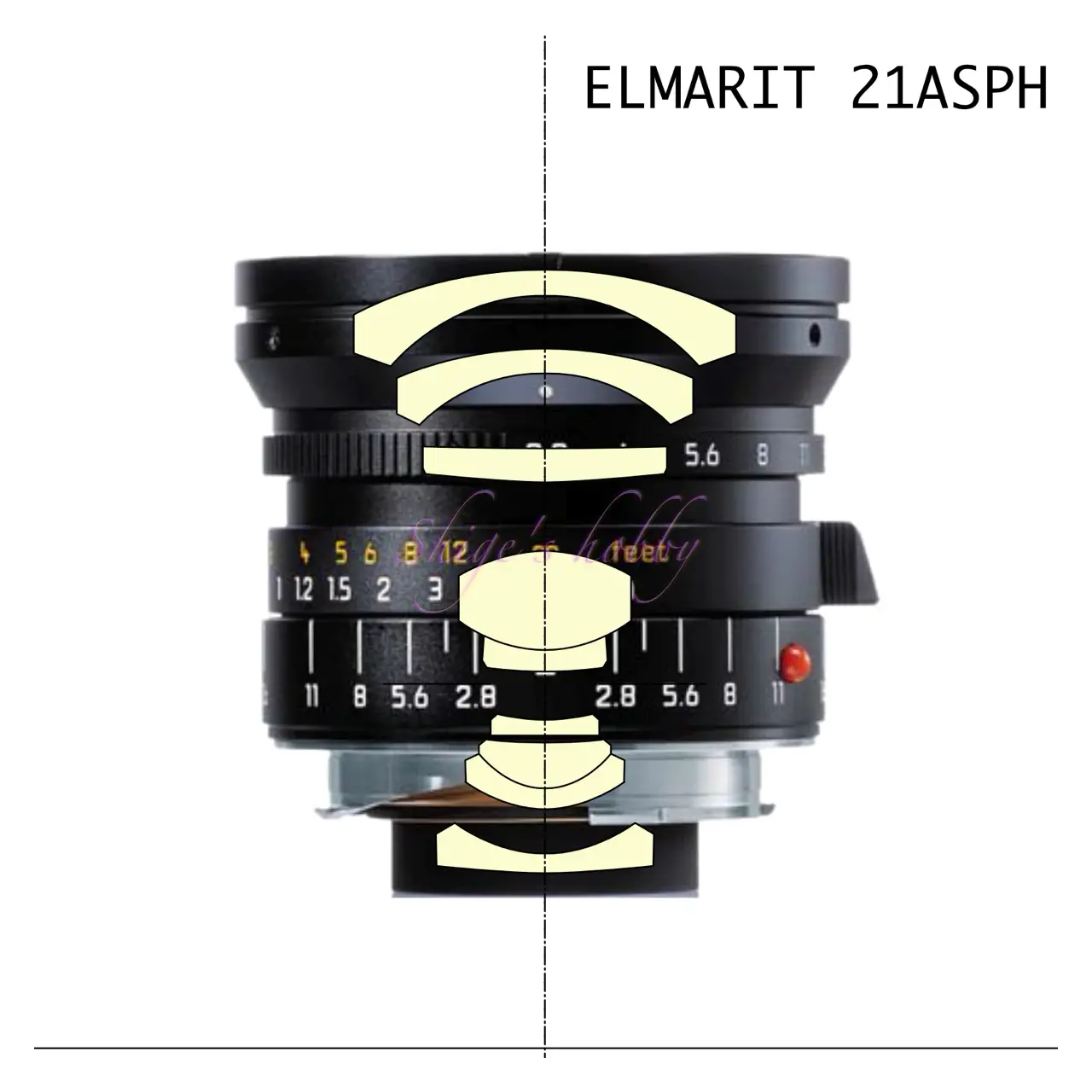
| Items | ELMARIT | ELMARIT ASPH. |
| Focal length(mm) | 21 | 21 |
| Max aperture | 2.8 | 2.8 |
| Min aperture | 22 | 16 |
| Lens Construction | 8elements in 6groups | 9elements in 7groups |
| Leaf blade | 8枚 | ← |
| Min distance(m) | 0.7 | ← |
| Lens length(mm) | 46.5 | 46 |
| Max diameter(mm) | 62 | 58 |
| Filter Size(mm) | E60 | E55 |
| Lens hood | 12543(Old-pin) 12537(New-hook) | 12592 14041 |
| Release date | 1979 | 1997 |
| Production number | 13,930 | 7,250 |
| Weight(g) | 290 | 415(Silver) 300(Black) |
Reference links
- Description of 21mm f/2.8 Elmarit M by LEICA Wiki
- New old camera ・Elmarit 21mm article
- High-end film scanner MINOLTA DiMAGE Scan Multi PRO・Shige’s hobby
- LEICA M10・Shige’s hobby
- LEICA M9・Shige’s hobby
Affiliate links
- Leica Lens・Ads by Amazon
- Leica Books・Ads by Amazon
- Classic Camera Specialty・Ads by Amazon

Update history
- 2025.4.18
- 2024.8.21
- 2024.03.11
- 2023.10.21

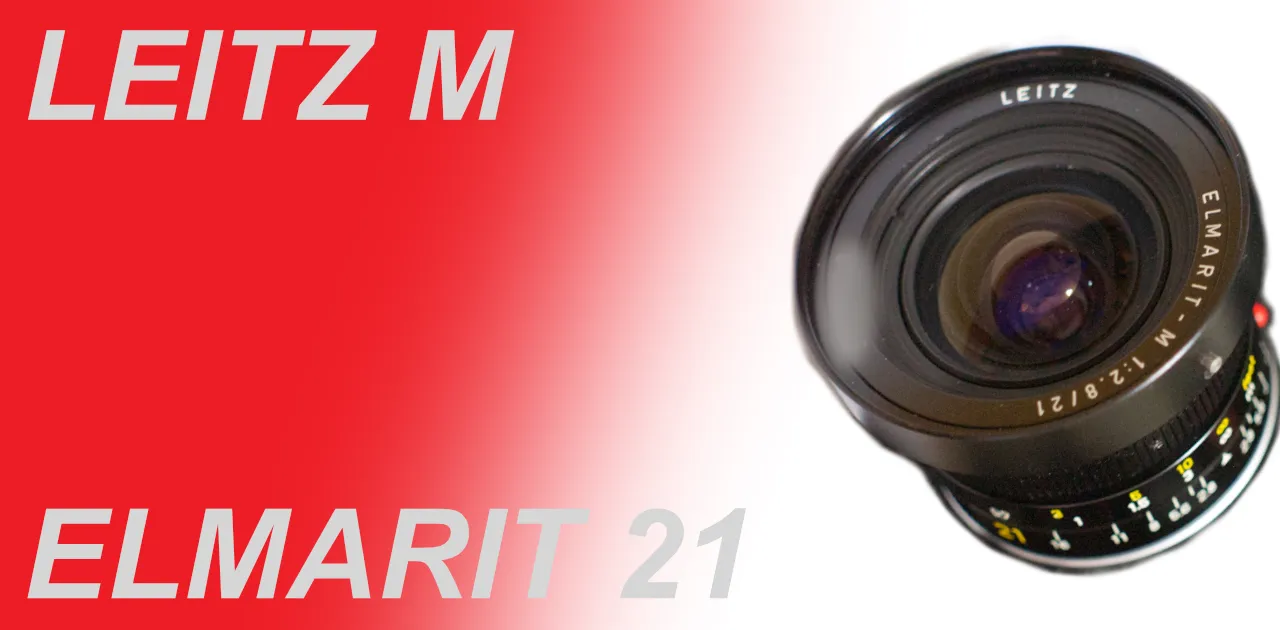

Be First to Comment